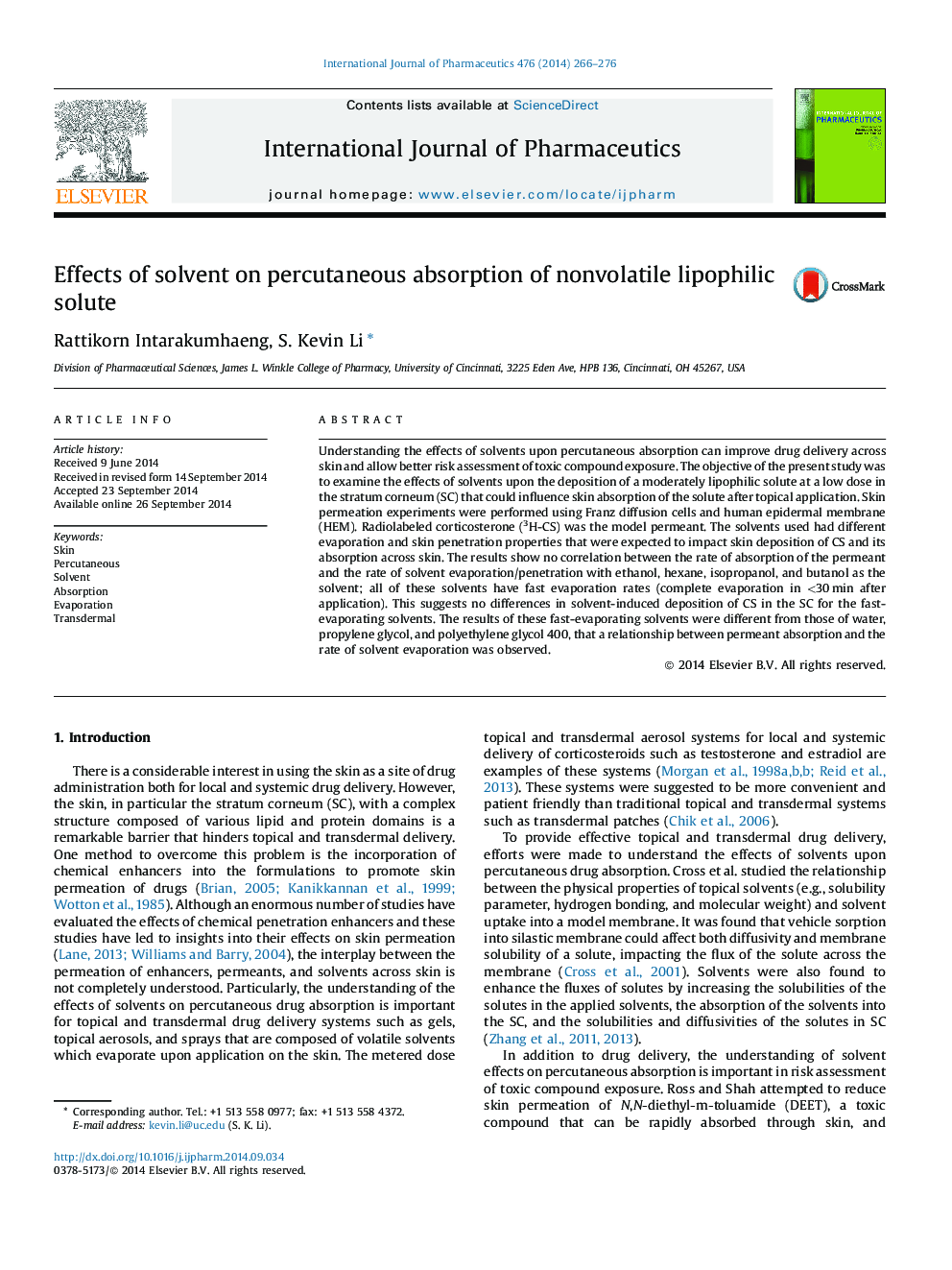| Article ID | Journal | Published Year | Pages | File Type |
|---|---|---|---|---|
| 2501722 | International Journal of Pharmaceutics | 2014 | 11 Pages |
Understanding the effects of solvents upon percutaneous absorption can improve drug delivery across skin and allow better risk assessment of toxic compound exposure. The objective of the present study was to examine the effects of solvents upon the deposition of a moderately lipophilic solute at a low dose in the stratum corneum (SC) that could influence skin absorption of the solute after topical application. Skin permeation experiments were performed using Franz diffusion cells and human epidermal membrane (HEM). Radiolabeled corticosterone (3H-CS) was the model permeant. The solvents used had different evaporation and skin penetration properties that were expected to impact skin deposition of CS and its absorption across skin. The results show no correlation between the rate of absorption of the permeant and the rate of solvent evaporation/penetration with ethanol, hexane, isopropanol, and butanol as the solvent; all of these solvents have fast evaporation rates (complete evaporation in <30 min after application). This suggests no differences in solvent-induced deposition of CS in the SC for the fast-evaporating solvents. The results of these fast-evaporating solvents were different from those of water, propylene glycol, and polyethylene glycol 400, that a relationship between permeant absorption and the rate of solvent evaporation was observed.
Graphical abstractFlux profiles of corticosterone across skin from solvents ethanol, hexane, propylene glycol (PG), polyethylene glycol 400 (PEG 400), butanol, isopropyl alcohol, and water.Figure optionsDownload full-size imageDownload high-quality image (167 K)Download as PowerPoint slide
